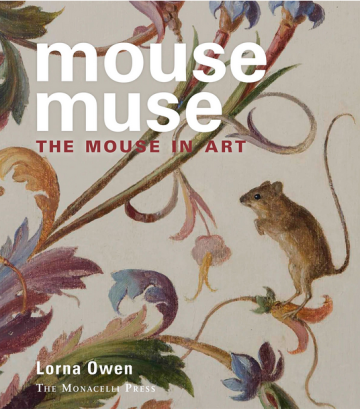Interview - Lorna Owen
After reading Lorna Owen's book Mouse Muse, you will think twice before setting out mousetraps, sprinkling poison pellets or calling the exterminator to solve your mouse problem. That squeaky creature crawling in your walls, sleeping in your closet or feasting in your pantry could actually become your muse; and you wouldn't be alone. Across centuries and civilizations the earth's most common mammal—after us—has been an endless source of inspiration for artists. The mouse is long beloved in literature from E. B. White's Stuart Little to Kafka's Josephine the Singer.
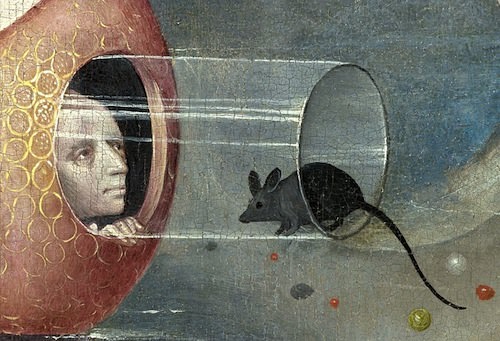 But for the visual arts, Mouse Muse is the first-ever compendium of the miniscule animal's astonishing cultural legacy. Based on Lorna's popular blog, Mouse Interrupted, Mouse Muse features more than 80 works accompanied by intriguing histories behind the work and how or why the artist came to use the mouse as an aesthetic subject. Mice appear in all forms: in a painting by Bosch, a woodblock print by Hokusai, a drawing by Picasso, a photograph by André Kertész, a sculpture by Claes Oldenburg, a video installation by Bruce Nauman, a performance by Joseph Beuys, and much more. Below is an interview with Lorna in which she talks about her unique project.
But for the visual arts, Mouse Muse is the first-ever compendium of the miniscule animal's astonishing cultural legacy. Based on Lorna's popular blog, Mouse Interrupted, Mouse Muse features more than 80 works accompanied by intriguing histories behind the work and how or why the artist came to use the mouse as an aesthetic subject. Mice appear in all forms: in a painting by Bosch, a woodblock print by Hokusai, a drawing by Picasso, a photograph by André Kertész, a sculpture by Claes Oldenburg, a video installation by Bruce Nauman, a performance by Joseph Beuys, and much more. Below is an interview with Lorna in which she talks about her unique project.
Suzanne Dottino: When did you come up with the idea and how did that experience inspire you to generate an entire book related to the mouse in art?
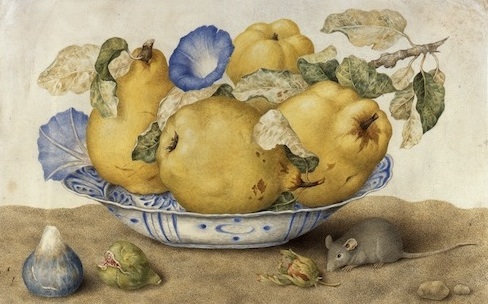 Lorna Owen: I've always had a bit of a love affair with mice—as long as they were behind glass. I remember my first visit to the Mouse House at the Bronx Zoo; I loved seeing all the different rodents, but the display that left the biggest impression on me was the one with the house mice running all around an ersatz porch. There was something about the humbleness of this common creature as well as the homey tableau. But as they say, careful what you wish for! When my husband and I moved into a 275-year-old farmhouse, we soon found out that several wild mice had first dibs on the place. I started removing them with no-kill traps, which are in effect small aluminum cages, and I could observe them, individually, up close. Quietly sitting there, they reminded me of Beatrix Potter's mice.
Lorna Owen: I've always had a bit of a love affair with mice—as long as they were behind glass. I remember my first visit to the Mouse House at the Bronx Zoo; I loved seeing all the different rodents, but the display that left the biggest impression on me was the one with the house mice running all around an ersatz porch. There was something about the humbleness of this common creature as well as the homey tableau. But as they say, careful what you wish for! When my husband and I moved into a 275-year-old farmhouse, we soon found out that several wild mice had first dibs on the place. I started removing them with no-kill traps, which are in effect small aluminum cages, and I could observe them, individually, up close. Quietly sitting there, they reminded me of Beatrix Potter's mice.
I knew in literature mice weren't just relegated to children's stories. There's Kafka's Josephine in his amazing short story “Josephine, the Singer, or the Mouse Folk,” Isaac Bashevis Singer's Hulda in “The Letter Writer,” and Gwendolyn Brooks's unnamed mouse in Maud Martha. I wondered if, like those writers who ventured beyond children stories, there were visual artists who did so as well. I started researching that and started a blog of my findings; I guess you might say I became obsessed.
SD What exactly is it about the mouse that makes it such a source of inspiration to so many artists?
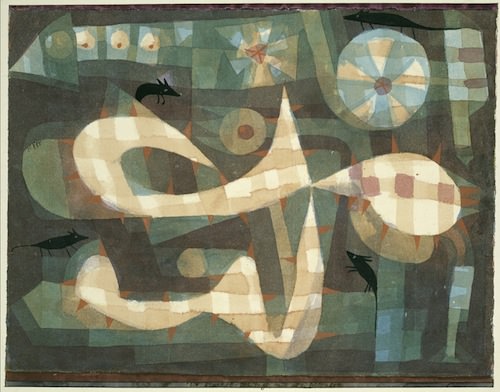 LO First off, the mouse is everyone's next-door neighbor and as we know artists are always looking for a ready model who works for free! If you think about it though, given the mouse's nature, there possibly isn't a richer subject matter. The mouse sharply illuminates the predator-prey narrative; it serves or did serve as a symbol of evil to the religious; and it—the lab mouse—is a central figure in the on-going debate between scientific advancement and the humane treatment of animals. In metaphor and myth, the mouse not only manifests our greatest flaws—greed and destruction, but also our greatest strengths—courage and tenacity. And finally, the mouse is a potent font of humor, maybe because of its appearance, its huge ears, or maybe because of its spectacular talent for startling those a thousand times its size.
LO First off, the mouse is everyone's next-door neighbor and as we know artists are always looking for a ready model who works for free! If you think about it though, given the mouse's nature, there possibly isn't a richer subject matter. The mouse sharply illuminates the predator-prey narrative; it serves or did serve as a symbol of evil to the religious; and it—the lab mouse—is a central figure in the on-going debate between scientific advancement and the humane treatment of animals. In metaphor and myth, the mouse not only manifests our greatest flaws—greed and destruction, but also our greatest strengths—courage and tenacity. And finally, the mouse is a potent font of humor, maybe because of its appearance, its huge ears, or maybe because of its spectacular talent for startling those a thousand times its size.
SD Can you tell me a little about your background in art? LO When I was ten my mother thought I showed some artistic promise and signed me up for evening art classes at the local college. Later I took a few studio art and art history courses; and much, much later, I worked for a year managing a studio of an Italian artist in New York. In addition to answering the phone, helping to catalogue and market his work, I painted on his canvases. Then he had me take his two sick cats, one after the other, to the vet to have them put down. That was about when I decided it was time to move on.
LO When I was ten my mother thought I showed some artistic promise and signed me up for evening art classes at the local college. Later I took a few studio art and art history courses; and much, much later, I worked for a year managing a studio of an Italian artist in New York. In addition to answering the phone, helping to catalogue and market his work, I painted on his canvases. Then he had me take his two sick cats, one after the other, to the vet to have them put down. That was about when I decided it was time to move on.
SD What was the most surprising fact or story about a mouse or mice during the course of your research?
LO The inclusion of live mice into works of art. Richard Serra back in the mid-60s was one of the earliest contemporary artists to incorporate live animals, including small creatures, in his work. Well, there was Dalí and his Rainy Taxi in the late '30s, if you count snails—of course we should count snails. Anyway since the '60s, with the burgeoning of conceptual art there have been a number of installation artists who see a living mouse as a work of art. Carsten Há¶ller, for example, in his enormous 2010 exhibition Soma, which was sort of a fantastical, double blind science experiment, incorporated live mice as one of the elements.
SD Which one is your favorite work in the book and why?
LO If I had to point to a single piece, I would have to say John Baldessari's Two Onlookers and a Tragedy (with Mice): it's a juxtaposition of two images of storybook-like mice and a very real mouse in a trap. The sweetness vis-á -vis the harshness I find poignantly sums up in a single moment the extremes of our complicated relationship with this creature. My second favorite piece is worth mentioning because I have permission to reproduce it here, which is Paul Klee's The Barbed Noose with the Mice. I love that it's sublimely subversive in that it has figurative mice invading a geometric abstraction.
SD You often hear people identify themselves as “a cat person” or “a dog person,” I have never yet met anyone who was “a mouse person”—not one who readily admitted it, why is that? 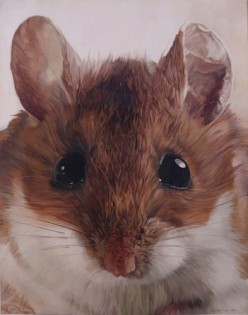
LO That's an interesting question, especially the notion that many mouse lovers are probably or somehow closeted which I suspect is true! If you google it, mice people definitely exist. There are organizations all over the world for pet and fancy mice owners and breeders as well as associations that set breed standards. There is actually a long tradition of mouse enthusiasts; in the UK the National Mouse Club I think dates back to more than 115 years, and in Japan they've been a beloved pet since before the Edo period. Perhaps it's just that a true mouse person is “as quiet as...”
SD Having completed this thorough exploration, what is your response to mice now when you see them?
LO When a mouse shoots out across the floor I don't yell quite as loud or jump quite as high.

Photo Credits:Hieronymus Bosch, The Garden of Earthly Delights (center panel, detail), c. 1490-1510, oil on panel. Prado, Madrid, Spain/Bridgeman Art Library: Giovanna Garzoni, Ceramic Bowl with Quinces, Morning Glories, Figs, Hazelnuts and a Mouse, 1651–1662, tempera on parchment. Collection of Silvano Lodi, Campione D'Italia. Courtesy of the Galleria Silvano Lodi & Due Milano: Paul Klee, The Barbed Noose with the Mice, 1923, watercolor and gouache on paper. The Berggruen Klee Collection, 1987 (1987.455.13), The Metropolitan Museum of Art, New York. © 2014 Artists Rights Society (ARS), New York. © The Metropolitan Museum of Art/Art Resource, NY: Joan Mirí, Red Mouse with Mantilla, 1975, aquatint. Private Collection. © 2014 Successií Mirí/Artists Rights Society (ARS), New York/ADAGP, Paris. © Christie's Images/Bridgeman Art Library: Mac Adams, Empty Spaces: Mouse, 1997, silver print. Courtesy of the artist:Trey Friedman, Close Mouse, 2009, Oil on paper. Courtesy of the artist:Stephan Reusse, Mice, Prague, 2009, laserscanning from moving images. © 2014 Artists Rights Society (ARS), New York/VG Bild-Kunst, Bonn. Photo: Hyunhee Park.
